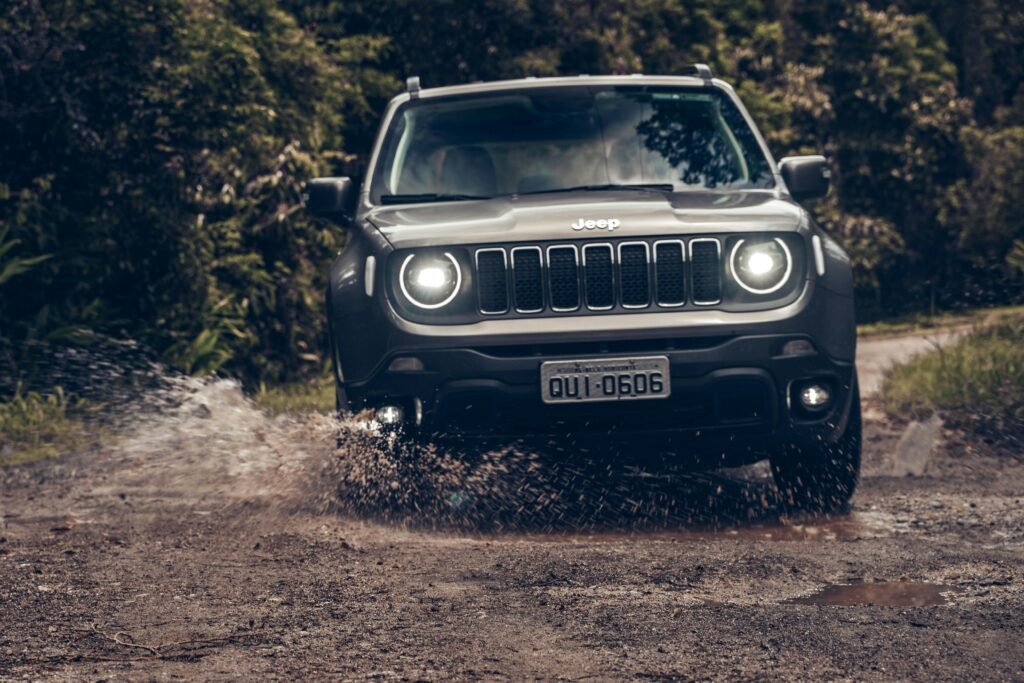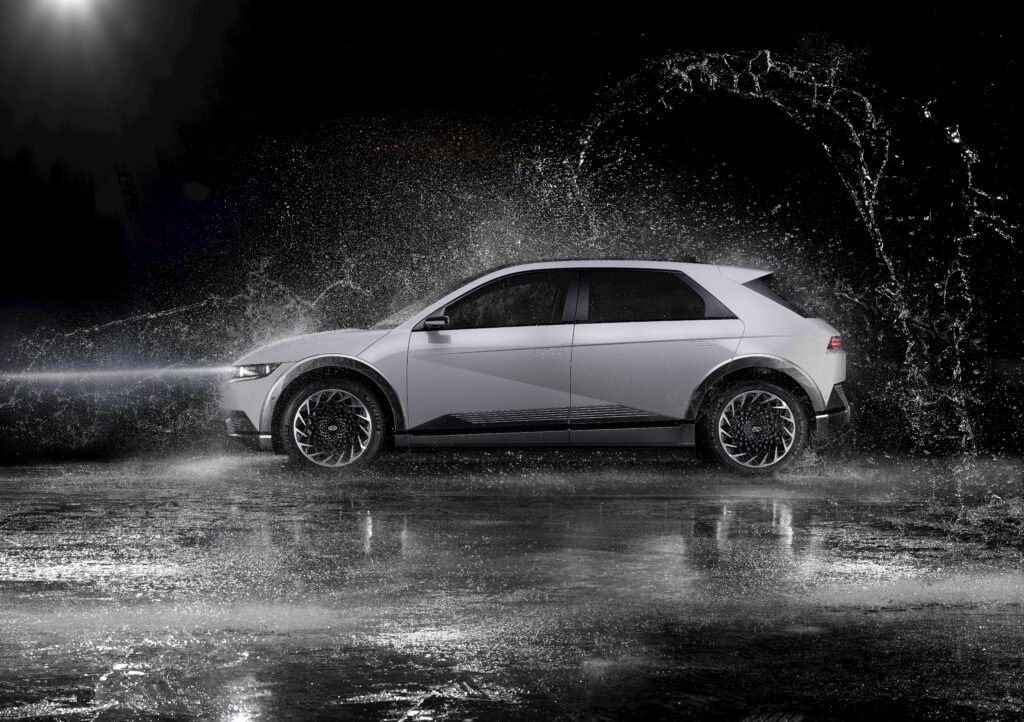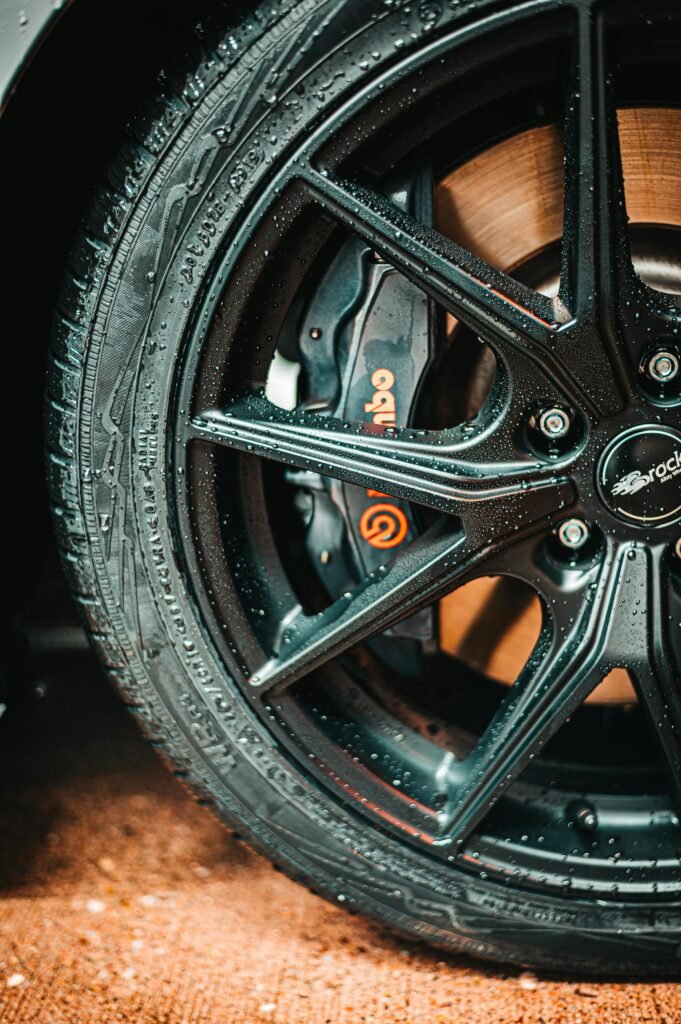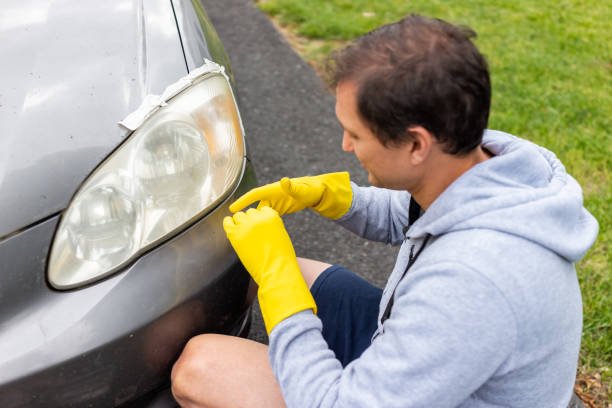Hidden Truths About Wet Driving - That Most Drivers Get Wrong
What if I told you driving fast in the rain is actually more fun than driving fast in the dry?
Driving fast in the rain can be dangerous for all intents and purposes. If you’re new to driving, not confident in driving, or haven’t got a lot of experience, just don’t drive fast in the wet.

I’m not going to go through any basics like making sure you have good tires, ensuring your car is mechanically sound, driving to the visibility, or what to do when your car goes sideways. As far as I’m concerned, these are kind of basic, and I’m not going to go into them.
I’m personally of the philosophy that modern sports cars and performance cars have too much grip for public roads. It’s very difficult to actually enjoy your car in the dry because the limit of grip is so much higher than the speed limit and what is socially responsible. So I really do think driving fast in the wet is a great way, if you’re an ethical petrolhead, to have your fun while not absolutely destroying the speed limits, your driver’s license, and everything else in the process.
The first thing you need to understand about driving in the rain is that your ultimate grip is going to be lower. The limits of grip are going to be much closer than you’re used to. If you attempt to throw the car around a corner at the same speed in the wet, you’re going to have a bad day and end up in a bush. Now, you can still have some fun in the wet, but it just has to happen at a lower threshold compared to in the dry because your ultimate grip is lower.
As you guys know, I’m the spirited driving guy and I like having fun in my cars. So when I see a national speed limit, I am still going to do what we normally do. But there are certain things that you just cannot do. When I see a car right behind me in my mirrors, it’s just not acceptable. It’s a really bad idea because if I slow down really quickly, he or she is not going to have the grip to brake the way they usually do.
This lower ultimate grip affects every aspect of driving. It affects the way you steer, the way you apply throttle, and the way you brake. I will tell you more about this later because I think it deserves its own section, especially regarding how you handle weight transfer in the car.
All of these things are highly affected by the fact that you have less ultimate grip. So how do you resolve this? Well, there’s nothing you can do about having less grip, so you have to drive around the issue. You need to leave a longer braking distance because it’s going to take you longer to stop. ABS is going to kick in, and you’re going to have issues slowing down. On the throttle, you have to be very smooth, progressive, and gentle.
It is exceptionally easy to lose grip on the throttle in the wet.

Front-wheel drive cars
Now, if you have a front-wheel drive car, this will cause you some problems. If you’re going around a corner and you’re too trigger-happy with the throttle, it’s going to push your front end wide. You’re going to have issues and struggle to go around corners.
Rear-wheel drive cars
But if you’re in a rear-wheel drive car, you’re going to have even bigger problems because the loss of grip is going to happen at the back of the car, which means you’re going to get into oversteer and fishtail all over the place. If you overcorrect, you’re going to slingshot yourself into someone’s house—not a good time.
Four-wheel drive cars
Some of you may have four-wheel drive cars and may feel invincible in the rain. Don’t. The only thing all-wheel drive helps you with is acceleration—that’s it. Cornering and braking, along with all the other things, are exactly the same as your front-wheel drive and rear-wheel drive counterparts. So don’t feel like you’re immune to losing grip just because you drive a four-wheel drive car.
Concept of aquaplaning
Now, there’s a very big misconception about what aquaplaning is. Aquaplaning is a very specific thing. It’s when you hit a large body of water and your tire floats above the surface of that water for a number of reasons, whether it’s over-inflation, going too fast, or the tire compound. Let’s be very clear about what aquaplaning is.
Aquaplaning is not when you’re going around a corner in the wet, lose the back end, and go into some bushes. That’s not aquaplaning; that’s just losing grip, poor driving, poor tire condition, or a combination of many things. Aquaplaning specifically happens when you hit a large body of water, and you don’t have the control you normally would because your tire isn’t making contact with the ground beneath the water.
I honestly think aquaplaning is hugely blown out of proportion. If you’re the type of person who likes to blast through huge bodies of water on the side of the road, please don’t do that.
Do’s and Don’ts
Slow down to avoid large bodies of water. Don’t tear through large bodies of water because what will happen is you will aquaplane. What do you do when you aquaplane? Well, there’s not really much you can do because your wheels are no longer in contact with the ground; it’s basically like being on ice.
So the only thing you really have to make sure of is that you keep the car going in the direction it was going. That’s pretty much all you can do. If you brake, the wheels will just lock up, and it’s a bad day. If you try to turn, there will be no grip. It’s a bad day.
The only thing you can do when you aquaplane is continue your momentum in the direction you were going. To be honest, if it was me aquaplaning, I would just keep my throttle at the same level it was. I would keep my steering in the same position, and I would just try to ride through that body of water. And then once you’re on the other side, you can decelerate and recover. If you hit a large body of water in the middle of a corner, you messed up.
If there is a large body of water in the middle of a corner and you hit it, then you were going too fast for your visibility in that corner. Jesus, take the wheel because there’s no helping you. Again, you can try to keep the same throttle and maintain the steering lock you had through that corner; it’s going to be a mess.
How to Get Rid of It
What you can really do is, when you come out the other side of that body of water, you can then try to counter whatever mess you’ve gotten yourself into. There is no cure for aquaplaning. Once you aquaplane, you are physically not in contact with the ground, so any inputs you’re making don’t really make a difference.
The best prevention for aquaplaning is two things.
Firstly, number one: put some good tires on your car. Don’t go and buy the cheapest far-road Chinese rubbish. Get some good quality tires. If you’re not driving a performance car, consider all-season tires because they are great in the summer and they’re great all year round. If you have a performance car and you like to drive it in the wet, don’t get the half-track Toyo R888. Just don’t do that. Get some good everyday performance tires. Michelin Pilot Sport 5 and Good Year Eagle A1 Symmetric 6 are phenomenal.
Meanwhile, I drove my car in second gear at full throttle, and the car hooked up. It’s great. The key benefit when it comes to aquaplaning with these tires is that they will have a lower threshold for aquaplaning because their wet weather characteristics are better.
And finally, the second thing you can really do is just use your brain. If you’re in the wet and in an area that’s liable to flooding, or you don’t know the area, there is a realistic chance there could be a body of water around the next corner that you go around. Just go slowly, go 30 miles an hour so that even if you enter the corner, you can still stop before you hit that body of water.
Weight Transfer
In the wet, everything is on a knife’s edge. Everything is just a little bit closer to disastrous than it usually is. Weight transfer is the key to all of it.
When I am on a more open road, I use second gear at full throttle. Imagine the situation. Good Year Eagle Asymmetric—I specifically didn’t talk about this in the ultimate grip portion because I feel like it deserves a section all to itself, where transfer is absolutely affected by the lower ultimate grip. If you overload the fronts and the rears, it’s much easier to do when your ultimate grip is lower.
So, you’ve got to be super precise with how you transfer the weight in the car, how you accelerate and take weight off the front, and how you brake and put weight onto the front. You have to be very deliberate and smooth and really think about what you’re doing in these situations. Even when cornering, you’re thinking about how you’re moving the weight to the outside of the car in that situation.
While driving, I’m thinking about the weight on this side of the car and how close I am to the limit, because it’s very easy, especially if you’ve got a car with a little bit of power. It’s very easy to reach those limits.
If you have a rear-wheel-drive car, you should also remember that you can actually accelerate far harder than you think because the weight transfer is backwards when you’re accelerating. If you accelerate progressively, you can progressively load more and more weight onto the rear. As you load the rear, you can accelerate more, and then you can load the rear more, and you can accelerate harder. So, in a rear-wheel-drive car, you can accelerate far harder than you think in the wet.
Braking the Car and Driving Well in This Situation

I’m going to talk a little bit about braking in this section. Again, it’s really easy to overload the fronts. I’m selecting a nice gear nice and early, and I’m going to be a little bit more progressive than I usually would be. Then we power out the other side once the wheels are straight. That’s the correct way to do it. Otherwise, you could understeer out of the corner, and if you’re in a rear-wheel-drive car, you might oversteer the other way.
Especially in rear-wheel drive, you’ve got to remember that when you’re braking, there’s less power on your driven wheels. So, you’ve got to be extra careful with rear-wheel drive. When you brake, you unload the rear. If you try to get back on the throttle too quickly while the rear end isn’t settled yet, you’re going to lose it.
The way you handle weight transfer really separates good drivers from average drivers. Being conscious of what the weight in the car is doing is a high-level skill, and you’ve got to develop that knowledge in order to be good at driving in the wet. A lot of what I’ve said so far has been very focused on spirited and fast driving. But you’ve got to remember that if you’re doing an emergency brake—say you’ve come into a situation where you absolutely have to stop—you’ve got to be very aware of that weight transfer, because it’s not only when you’re trying to drive fast; it could be when you need every ounce of grip that you can get.
I always talk about trail braking. These are the types of things that are advanced maneuvers.
The definition of an advanced maneuver is a maneuver that is not applicable in every scenario. You have to have experience and knowledge to determine when to deploy the advanced maneuvers. Trail braking is a great example of a maneuver that would be very counterproductive for weight transfer.
The whole point of trail braking is that you can put more weight on the front wheels to give them more grip to help you turn. But the weight in a car is finite. So, if you put more weight on the front, you’re automatically removing weight from the rear. I think I’m going with this: trail braking is exceptionally dangerous on the road in the wet because you’re unloading the rear tires at the same time that you’re turning. Certain maneuvers are just not appropriate on the road in the wet, and you’ve got to have the experience and knowledge to determine which ones should be used and which ones shouldn’t.
95% of people—I would just say don’t do it. It’s really risky, and it can go catastrophically wrong. But it just goes to show how much all of these things tie together. Trail braking is a useful maneuver, but the way it interacts with weight transfer in the wet is undesirable.


